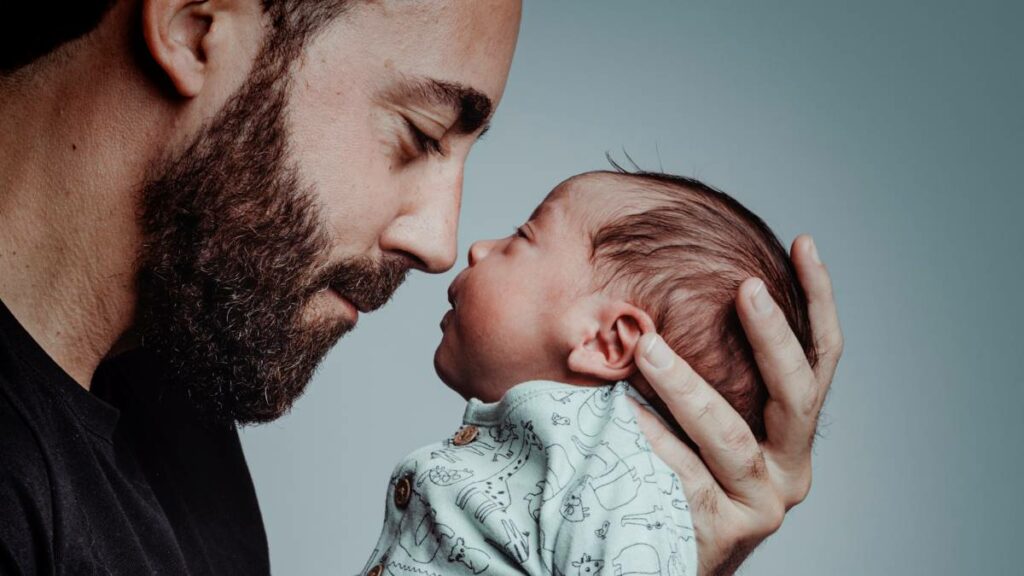Maternity leave and pay have been running for a lengthy period, but until recently there was little in the way of support for fathers. However, in the last decade or so, we have seen a change with the introduction of paternity pay and leave. It gives fathers paid time off work after their partner has given birth or adopted a child. In this article, we discuss paternity leave and pay in more detail.

- An Introduction to Paternity Pay and Leave
- Eligibility Requirements
- What Is Paternity Leave?
- What Is Paternity Pay?
- How To Make a Claim for Paternity Pay and Leave
- Adoption and Surrogacy
- Paid Time Off for the Mum's Partner
An Introduction to Paternity Pay and Leave
If you take leave by virtue of your partner giving birth, an adoption, or a surrogacy agreement, you may be entitled to receive Statutory paternity payment (SPP) which translates into one or two weeks of paid paternity leave. During this period, you maintain employment rights. This means you can:
- Continue to build up holidays
- Take advantage of pay raises
- Return to work after the paternity period ends
As part of your rights, before your partner gives birth, you can take them to two antenatal appointments. With child adoption, you can attend two adoption appointments after pairing/matching with a child.
Eligibility Requirements
The leave must be to look after the baby or child, and you must be any of the following:
- Father of the child
- The husband or the mother’s partner
- The adopter
- The parent, if you are having a baby through a surrogacy agreement
Note: If you’ve taken paid leave for adoption appointments, you are not eligible for paternity leave and pay.
What Is Paternity Leave?
After your partner has given birth, you have the entitlement to one or two weeks leave, which must be taken all at once. For example, if you wish to take two weeks, it has to occur in one continuous go. It cannot be in separate spells, such as two single weeks separated by a time period.
Paternity leave can only begin after the birth of the baby. It must be completed by the 55th date following the birth. There is no need to provide an exact starting date; a general estimation is sufficient.
How To Qualify for Paternity Leave?
To qualify, you must be:
- An employee and not a freelance contractor
- Provide the correct notice
- Worked continuously for the employer for 26 weeks until the 15th week before the expected birth
What Is Paternity Pay?
Paternity Pay is the payment you receive while taking time off through paternity leave. How much is the statutory paternity pay (SPP)? The weekly SPP rate is £156.66 or 90% of the average weekly wage (whatever number is lower). Payments are made in the same way as wages. If you receive a salary monthly through the bank, paternity payment is paid in the exact same way.
How To Qualify for Paternity Pay?
To qualify, you must:
- Be an employee up to the birth taking place
- Provide the correct notice
- Worked continuously for the same employer for 26 weeks until the 15th week before the expected birth
- Earn, on average, a minimum of £123 per week
Note: Some people may qualify for paternity leave but not statutory paternity pay. In such circumstances, you can claim income support.
How To Make a Claim for Paternity Pay and Leave
The employer is responsible for handling and making the payment. Claims must be made more than 15 weeks before the baby is due. There is no need to provide proof of birth or pregnancy.
To apply, a person has to fill in this UK government form and hand it to their employer. The employer may have their version of the claim form. The application will ask for important information such as:
- When the baby is due
- The number of weeks required (1 or 2 weeks)
- The start date (e.g., when the baby is expected to be born)
You can also read: How To Top Up Your Income with Working Tax Credits.
Adoption and Surrogacy
Where there is an adoption or surrogacy involved, things work a little differently. But much of it is similar to giving birth to a child, and the eligibility criteria are the same.
Qualification Where There Is an Adoption
It is the same as giving birth to a child, except you must have been in continuous employment for 26 weeks when the “matching” occurs. This moment should be one of the following:
- In a domestic adoption: the week the “matching” occurs.
- In an overseas adoption: the week you pay to start the adoption process or the child arrives in the UK.
To be eligible for paternity pay, the employer must receive proof that an adoption is taking place. A matching certificate or a letter from the adoption agency is a relevant document to act as proof. There is no need to provide evidence for paternity leave.
Qualification Where There Is a Surrogacy Birth
When a surrogate is used to have a baby, the following conditions must be met:
- Be part of a couple
- Take responsibility for the baby
- Worked continuously for the employer for 26 weeks until the 15th week before the expected birth
Paid Time Off for the Mum’s Partner
Paternity pay and leave have been part of the law for almost 2 decades. However, it has only started to receive mainstream coverage in the last 10 years. Paternity leave and pay allow fathers to be with their newborns and support the mother. We hope you now know what you need to make the most of this great scheme.





